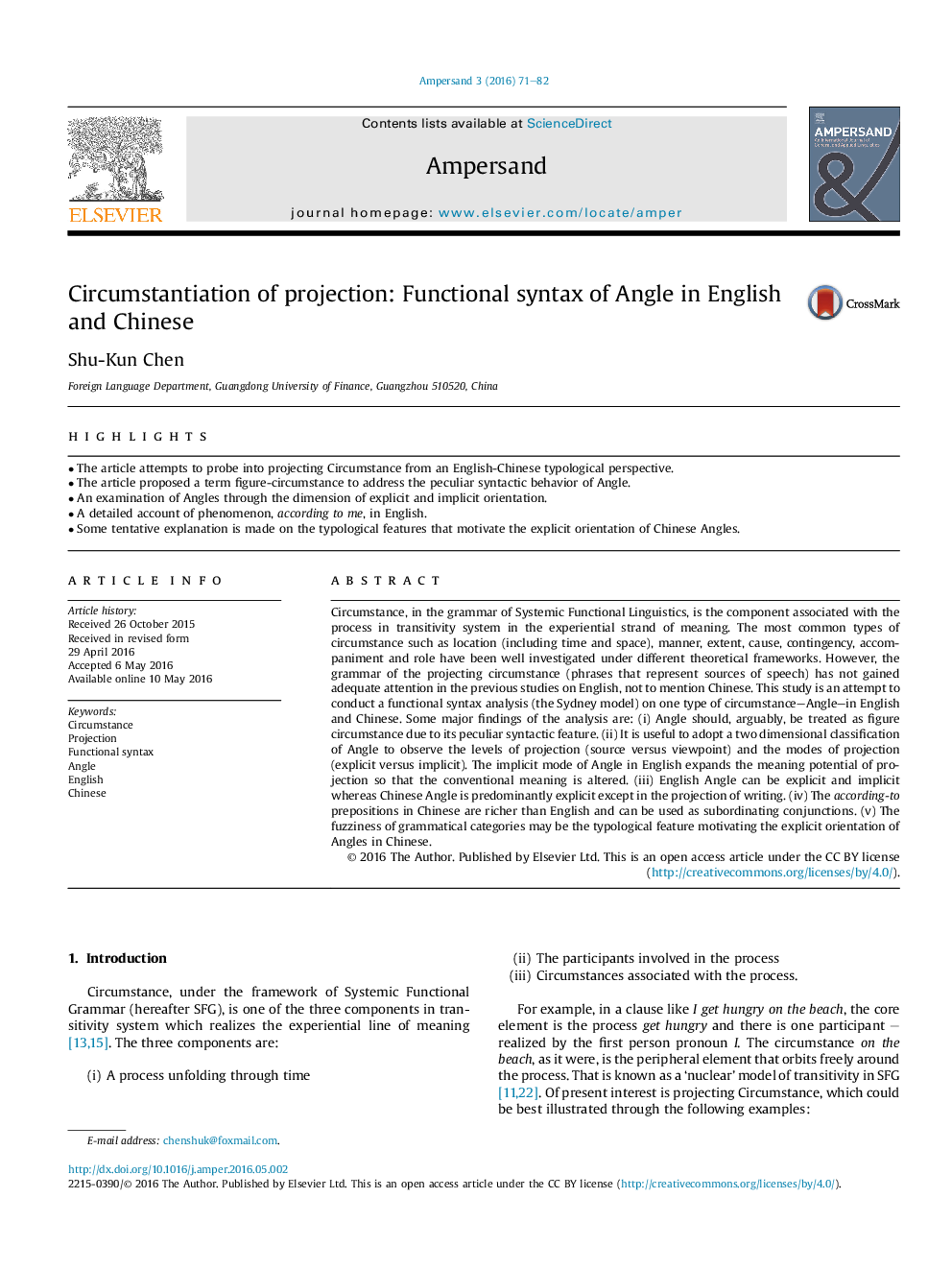| Article ID | Journal | Published Year | Pages | File Type |
|---|---|---|---|---|
| 1100460 | Ampersand | 2016 | 12 Pages |
•The article attempts to probe into projecting Circumstance from an English-Chinese typological perspective.•The article proposed a term figure-circumstance to address the peculiar syntactic behavior of Angle.•An examination of Angles through the dimension of explicit and implicit orientation.•A detailed account of phenomenon, according to me, in English.•Some tentative explanation is made on the typological features that motivate the explicit orientation of Chinese Angles.
Circumstance, in the grammar of Systemic Functional Linguistics, is the component associated with the process in transitivity system in the experiential strand of meaning. The most common types of circumstance such as location (including time and space), manner, extent, cause, contingency, accompaniment and role have been well investigated under different theoretical frameworks. However, the grammar of the projecting circumstance (phrases that represent sources of speech) has not gained adequate attention in the previous studies on English, not to mention Chinese. This study is an attempt to conduct a functional syntax analysis (the Sydney model) on one type of circumstance–Angle–in English and Chinese. Some major findings of the analysis are: (i) Angle should, arguably, be treated as figure circumstance due to its peculiar syntactic feature. (ii) It is useful to adopt a two dimensional classification of Angle to observe the levels of projection (source versus viewpoint) and the modes of projection (explicit versus implicit). The implicit mode of Angle in English expands the meaning potential of projection so that the conventional meaning is altered. (iii) English Angle can be explicit and implicit whereas Chinese Angle is predominantly explicit except in the projection of writing. (iv) The according-to prepositions in Chinese are richer than English and can be used as subordinating conjunctions. (v) The fuzziness of grammatical categories may be the typological feature motivating the explicit orientation of Angles in Chinese.
